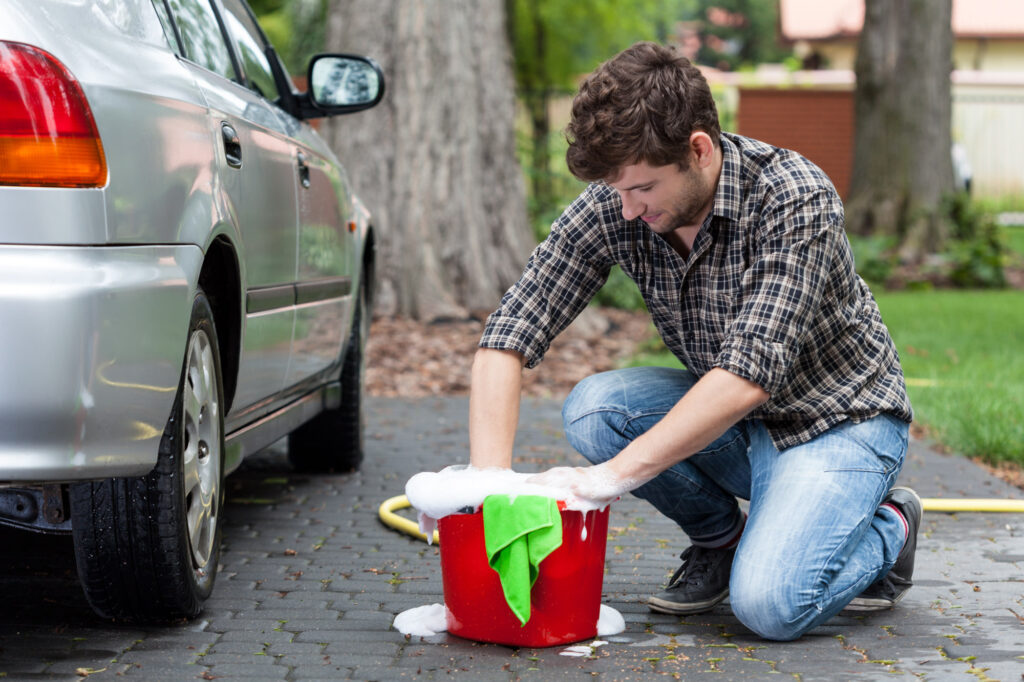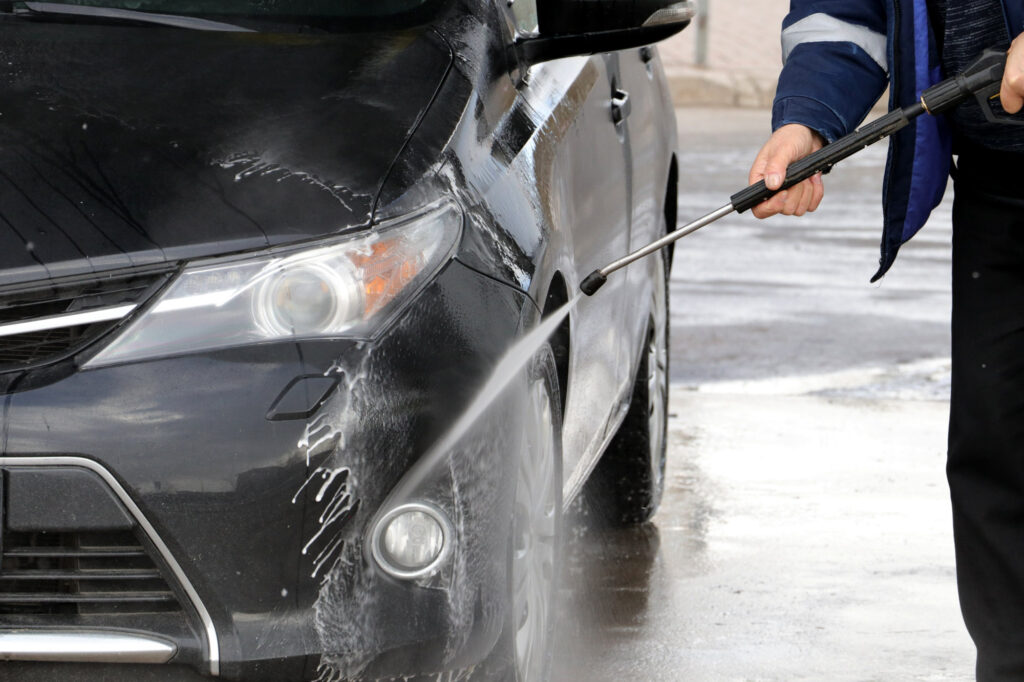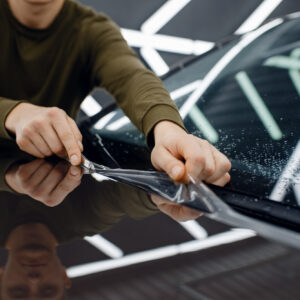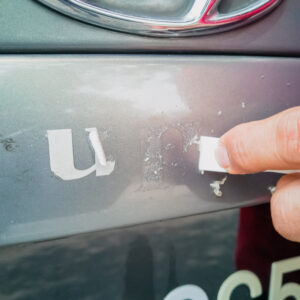No vehicle is immune to blemishes. Some get dents from accidents, while others get scratches from flying rocks and other road debris. Those that were, unfortunately, parked near buildings that are being painted often get paint splatters.
If you find yourself in the final scenario, don’t worry. There are ways to remove unwanted paint from your daily driver. Before we delve into them, let’s look into the things you might need for the job.
Removing Paint: Things You Might Need
Before removing any paint from your vehicle, it’s important to stock up on some essential items. Some of these items exist to protect you while handling dangerous chemicals and heavy-duty equipment. Others make the task more convenient.
Safety Goggles
If you want to get paint off your car, there’s a good chance you might have to use toxic chemicals or create lots of dust by sanding your ride. In that case, it’s a good idea to protect your eyes from dust and chemicals with some goggles.
Respirator Mask
Sometimes wearing goggles alone isn’t enough. While you might be able to protect your eyes, you can still breathe in dust particles and toxic fumes from chemicals.
Fortunately, you can protect yourself by wearing a respirator mask to filter the air you breathe and opening the windows to improve air circulation.

Coveralls
If you want to protect your skin from dust, debris, and harmful chemicals, it’s a good idea to cover up as much as you can. Wearing some coveralls should do the trick nicely.
If you don’t have any coveralls, wearing long-sleeved shirts coupled with a pair of pants should get the job done as well. It’s also important to wear boots to prevent the entry of dust or chemicals.
It’s also important to wear boots to prevent the entry of dust or chemicals.
–Anthony Harlin, ASE Certified Master Automobile Technician
Protective Gloves
Because you’re going to be handling potentially harmful chemicals like acetone, it’s important to keep your hands well protected.
Similarly, if you use a sander, wearing heavy-duty gloves would prevent the skin on your fingers from getting shredded and blistered.
Bucket
If you plan on dousing your car with water to get rid of any chemical substances such as vaseline and acetone, you’ll need a bucket to hold it all.
This isn’t applicable for people who plan on using a pressure washer to rinse their rides after scrubbing them with soap, chemicals, and cleaning solutions. Instead, you’ll want to hook your pressure washer straight to the water supply instead.
Microfiber Towel
Last but not least, you’re going to need a microfiber towel if you want to soak up water and spread certain fluids like WD-40 and acetone around.
You can also use the towels to dry out wet spots. This prevents water from seeping into cracks, leaving blemishes and causing rust. If you don’t have a microfiber towel, you can use any absorbent rag or cloth.
Got everything you need? Let’s explore the different methods you can use to get paint off your car.
Method 1: Scrub With Soap and Water

The first method, and arguably the most simple one, is to scrub unwanted paint stains with soap and water. Bear in mind that this method only works on paint that’s still wet.
- Mix water and soap inside a bucket.
- Soak a microfiber towel in the mixture.
- Rub the fresh paint splotch in a circular motion with the soaked towel.
- Don’t stop until the paint is gone.
- Dry the wet spots with another towel.
Method 2: Soften the Paint with WD-40
If you have WD-40, you can use it to remove unwanted stains without damaging your vehicle’s original coating. The fluid softens the paint stains, making them easier to scrub off with a towel.
- Spray WD-40 on the paint splotch you want to remove.
- Wipe off the WD-40 with a towel. Wipe in the same direction as the paint.
- Repeat until the paint is gone.
- Wipe off any residual WD-40.
Method 3: Use Paint or Lacquer Thinner
If soap solution and WD-40 can’t remove the paint stain, you can opt to try something a little stronger like thinner. Use paint thinner or lacquer thinner to get rid of especially stubborn dried paint.
However, you must be careful. These thinners weaken and remove all paint, so they could damage your vehicle’s actual coat.
- Wear protective equipment, such as safety goggles, a respirator mask, coveralls, and gloves.
- Clean and dry the spot covered with paint with soap and water.
- Apply a small amount of paint thinner or lacquer thinner to a towel.
- Rub the paint stain with the towel until it comes off.
- Rinse your vehicle with water to remove excess thinner.
Method 4: Use Vaseline and a Pressure Washer

Vaseline is more forgiving than paint thinner. It works well on stubborn paint stains, and it’s a great method provided you have a pressure washer to remove it afterward. Use the pressure washer carefully to avoid rinsing off your vehicle’s coat.
- Cover the paint stain you want to remove in Vaseline.
- Leave the Vaseline on for 12 hours.
- Use a pressure washer to rinse the Vaseline off and remove the stain.
- If some paint remains after rinsing, repeat the process until it’s completely gone.
Method 5: Wipe the Paint with Acetone
Acetone is a strong chemical that can break down paint stains. It can remove the stain and the car’s coat, so use it carefully.
- Wear protective equipment.
- Clean the spot covered with paint with soap and water.
- Dry the car with a towel.
- Pour some acetone on the towel and rub the stain until the paint comes off.
- Rinse your vehicle to get rid of any lingering acetone.
Method 6: Strip the Paint by Using a Sander
The final method, and arguably the one that requires the most effort, is to strip the paint entirely with a sander. Unlike the other methods, sanding your vehicle’s coating should be reserved for drivers who want to remove all of the paint from their ride.
- Wear protective equipment and load 40-grit sandpaper onto the sander.
- Use your sander on large flat surfaces of your vehicle and avoid leaning the sander towards one side.
- Sand the surface evenly to avoid damaging the shape of your vehicle.
- After the flatter surfaces have been sanded, move onto smaller and tighter areas and sand the paint off the vehicle carefully.
- Wipe your vehicle down with a wet rag to get rid of the dust, clean your vehicle, and prevent oxidation and rust.
- Repeat the process with 120, 220, and 400-grit sandpaper until there’s no paint left on your vehicle.
- Wash your vehicle down to get rid of any remaining dust before drying it.
Any information provided on this Website is for informational purposes only and is not intended to replace consultation with a professional mechanic. The accuracy and timeliness of the information may change from the time of publication.




















